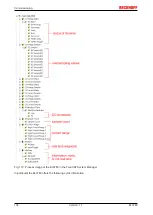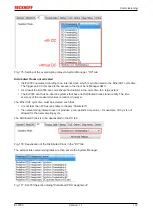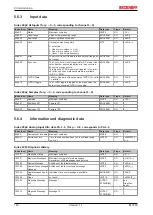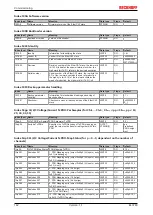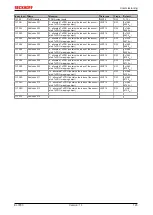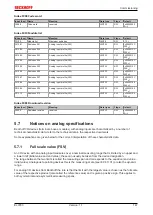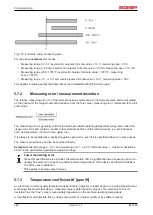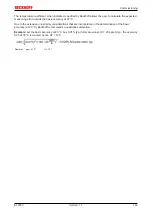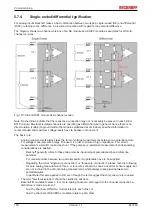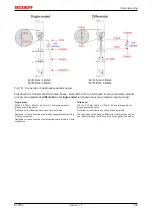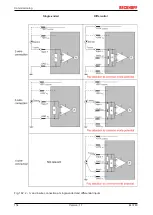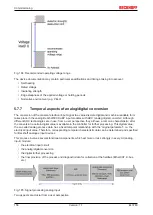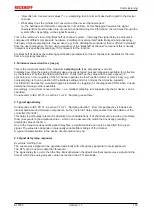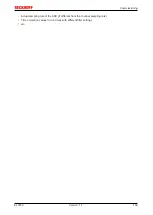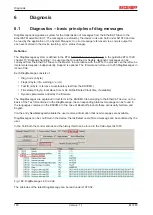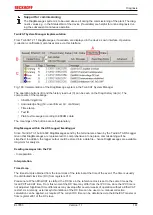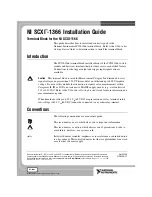
Commissioning
EL3783
148
Version: 1.1
Fig. 178: Full scale value, measuring span
For the above
examples
this means:
• Measuring range 0...10 V: asymmetric unipolar, full scale value = 10 V, measuring span = 10 V
• Measuring range 4...20 mA: asymmetric unipolar, full scale value = 20 mA, measuring span = 16 mA
• Measuring range -200...1370°C: asymmetric bipolar, full scale value = 1370°C, measuring
span = 1570°C
• Measuring range -10...+10 V: symmetric bipolar, full scale value = 10 V, measuring span = 20 V
This applies to analog output terminals/ boxes (and related Beckhoff product groups).
5.7.2
Measuring error/ measurement deviation
The relative measuring error (% of the full scale value) is referenced to the full scale value and is calculated
as the quotient of the largest numerical deviation from the true value (‘measuring error’) referenced to the full
scale value.
The measuring error is generally valid for the entire permitted operating temperature range, also called the
‘usage error limit’ and contains random and systematic portions of the referred device (i.e. ‘all’ influences
such as temperature, inherent noise, aging, etc.).
It is always to be regarded as a positive/negative span with ±, even if it is specified without ± in some cases.
The maximum deviation can also be specified directly.
Example
: Measuring range 0...10 V and measuring error < ± 0.3 % full scale value → maximum deviation ±
30 mV in the permissible operating temperature range.
Lower measuring error
Since this specification also includes the temperature drift, a significantly lower measuring error can
usually be assumed in case of a constant ambient temperature of the device and thermal stabiliza-
tion after a user calibration.
This applies to analog output devices.
5.7.3
Temperature coefficient tK [ppm/K]
An electronic circuit is usually temperature dependent to a greater or lesser degree. In analog measurement
technology this means that when a measured value is determined by means of an electronic circuit, its
deviation from the "true" value is reproducibly dependent on the ambient/operating temperature.
A manufacturer can alleviate this by using components of a higher quality or by software means.

